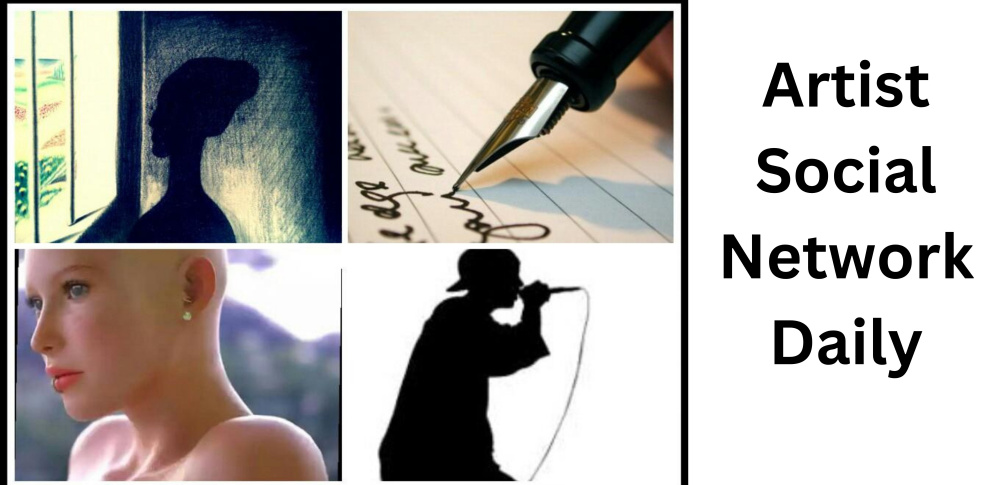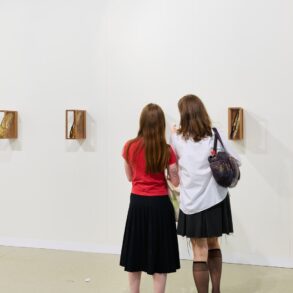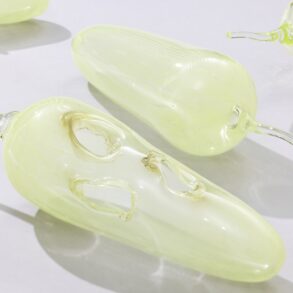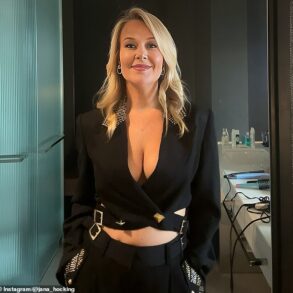There are countless South Carolina women making waves in the world of art.
In honor of Women’s History Month, four Charleston museums are highlighting a handful of women artists who have carved out platforms for themselves as masters of their craft, interpreters of culture and leaders of change.
Check out the following list of female artists spotlighted by the International African American Museum, Gibbes Museum of Art, Charleston Museum and Halsey Institute of Contemporary Art.
The International African American Museum

Michaela Pilar Brown is an artist and gallerist based in Columbia.
“The contributions of women artists, particularly Black women artists, have often been overlooked. IAAM is dedicated to showcasing those women whose work is deeply rooted in South Carolina and who use their art to capture their experiences and contribute to the state’s artistic landscape.” – Isabelle Britto, associate curator
Michaela Pilar Brown is a visual artist and curator based in Columbia. She has been creating provocative installations, performances and photography since the early 2000s. Her work, which gained recognition in the 2010s, examines race, gender, memory and African-American cultural narratives through what Britto described as “bold, dreamlike compositions.”
After training as a sculptor at Howard University, she expanded her focus to found objects, textiles and organic materials, innovating dimensions of Afrofuturist storytelling with her mixed-media assemblages.

Michaela Pilar Brown’s “Untitled 1.”
As a curator, she uplifts BIPOC artists of the South to give space to marginalized voices. In 2007, she founded the 701 Center for Contemporary Art, the largest nonprofit art center in South Carolina.
The Gibbes Museum of Art
“Women artists have long been a force in the South Carolina and Charleston arts scene. Historically women have often contributed much more than their artistic output, playing significant roles in pushing the arts community in our region forward.” – Sara Arnold, director of curatorial affairs
Abstract painter and printmaker Corrie McCallum led efforts to expand art appreciation classes in area public schools in the 1960s while she served as curator of art education at the Gibbes, inspiring new generations to express themselves.

Corrie McCallum pictured circa 1965.
Born in 1914 in Sumter, McCallum would go to study at the School of the Museum of Fine Arts in Boston, drawing influence from modernists like Henry Matisse who were known for bold colors and mind-bending abstractions. She was married to fellow modernist artist William Halsey.
Her diverse artworks embodied an expressionism that relied on the value of lines and suggestive brushwork. She embraced experimental approaches to traditional Southern art that dwelled on countryside drawing and rural depictions.
The Halsey Institute of Contemporary Art
“Women have long influenced art during every time, but with contemporary art, more than ever, women have taken the lead in making visible the forgotten, creating community and sharing and changing perspectives. ‘Womxn’ are our present, past and future and will always find a way to connect and build empathy.” – Kaylee Lass, interim director of exhibitions

“My Ancestors Acres Stolen; Seeking Return” by Cookie Washington.
Renowned fiber artist Torreah “Cookie” Washington, born in Morocco, has been living and working in Charleston since the 1980s. Her powerful quiltworking enfolds Gullah-Geechee culture, Black womanhood and spirituality with a unique intricacy.
It is as if she sews myths, capturing the ancestral lore passed down by generations. Yet she imparts a distinct voice of her own, translating her life story with thread. She often embellishes her work with tokens from her travels, such as beads or shells.

Fiber artist Torreah “Cookie” Washington
Since 2006, she’s been a guest curator with the Annual African American Fiber Art Exhibition, which is part of the annual North Charleston Arts Festival. The exhibition has become a well-known platform for Black fiber artists, and has traveled to other cities in the South.
The Charleston Museum
“It’s extremely important to tell the story of women artists in Charleston. They were strong in their own right, and each had a story to tell through the creations that they made.” – Jennifer McCormick, chief curator.
The Charleston Museum, founded in 1773, gives history lovers a chance to see artworks stored in its vast archives throughout the year, and this month the focus will be on lesser known women artists from the Charleston Renaissance, which took place circa 1910s-1940s.

An untitled etching by Charleston Renaissance Mary Wilson Ball depicting a man on a park bench.
A large number of etchings in its coffers were collected over time from the Charleston Etching Club, which was founded in 1923, McCormick said. The museum was the locale for the club, and participating artists donated artworks to the museum over the years.
One unknown artist in particular, Mary Wilson Ball, has a significant amount of works in the archives that span various mediums. She was active toward the end of the Charleston Renaissance.
Ball was born in Charleston in 1892 and studied under Alice Ravenel Huger Smith, who is a more well known painter associated with the Charleston Renaissance. Ball, who was a watercolorist and oil painter, worked as a cartographer for the army in Washington D.C., but upon her return to Charleston she immersed herself in her art. In addition to studies in watercolor and oil on canvas, she has a plethora of sketchbooks and etchings in the Charleston Museum archives.
The next archival exhibit, which is part of the Charleston Museum “Conversations with the Curator” series, takes place March 7. Visit charlestonmuseum.org for details.
This post was originally published on this site be sure to check out more of their content




